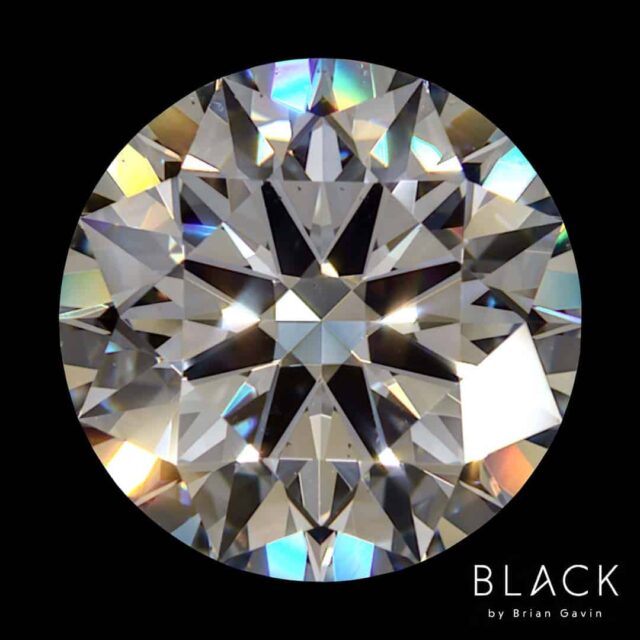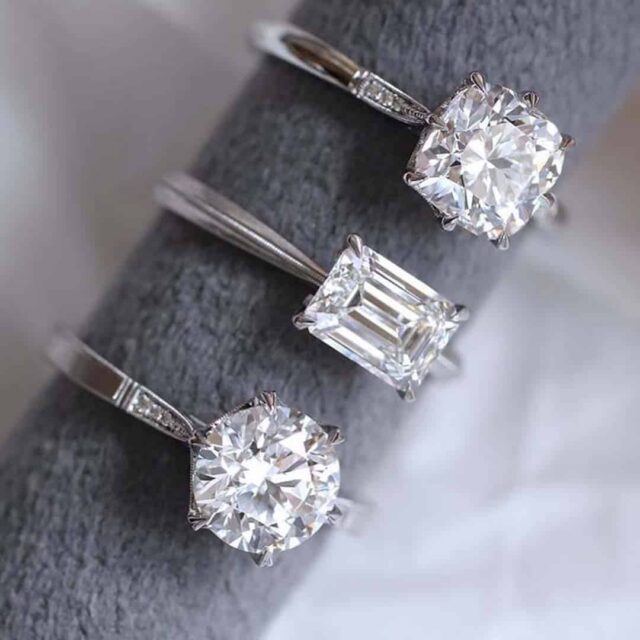The diamond symmetry grade depends on the consistency of facet shape, size, and alignment; misshapen facets, off-center culets and tables, and wavy girdles. It is essential to understand that the symmetry grade on the lab report is an indication of meet-point-symmetry.
In other words, it's based on how evenly the points align at the junction points. In contrast, Optical Precision is the consistency of facet shape, size, and alignment from the perspective of 360-degrees. The latter characteristic determines the intensity of sparkle and is not considered byh the gemological laboratories.
Optical Precision vs. the Lab's Diamond Symmetry Grade:
As a matter of fact, most people wrongly assume that diamond symmetry is the consistency of facet shape, size, and alignment. Consequently, the term for that type of symmetry is optical precision.
Unfortunately, the labs don't take that into account during the grading process. Optical precision is a critical component of light performance, as can be seen in the examples above.
Obviously, there is a dramatic difference in the overall appearance and sparkle factor of the diamonds above. However, they all have proportions in the middle of the spectrum for the ideal cut rating.
In that case, we know that the difference is due to the degree of diamond symmetry and optical precision. As can be seen, the Black by Brian Gavin Diamond is the clear-cut winner.
Diamond Symmetry Grades:
Most laboratory-issued diamond grading reports rate symmetry on a scale that includes poor, Fair, Good, Very Good, and Excellent or Ideal. In general, the determining factors of each grade are as follows:
AGS Ideal & GIA Excellent Symmetry:
As a matter of fact, the industry standard for diamond grading is 10x magnification. In that case, there should not be any misshapen or misaligned facets visible under 10x magnification.
Consequently, you might be able to see something under higher degrees of magnification. The same principle holds for diamond clarity characteristics.
Although that may be true, we tend to use higher degrees of magnification when evaluating diamond symmetry. That's because it can be challenging to detect slight variations in facet alignment and structure using only 10x magnification.
Be that as it may, we have to scale down the magnification to assess diamond symmetry properly. Super ideal cut puppies like this Black by Brian Gavin Diamond are brighter because of the higher degree of symmetry. In that case, there is an obvious benefit to focusing on diamonds with the highest overall cut grade.
Very Good Symmetry:
The spectrum for very good diamond symmetry allows for one or two minor symmetry characteristics visible under 10x magnification. As stated previously, most diamond graders use higher degrees of magnification to locate these areas more easily.
On the left is the GIA diamond grading report for the diamond shown above in the middle of the row. It's a 1.22 carat, H-color, VS-2 clarity, from Blue Nile with GIA Very Good diamond symmetry.
As you can see, we circled the very good symmetry grade in red for your reference. The polish and overall cut grade is also very good. Be that as it may, it's obvious why we recommend a minimum of Excellent/Ideal diamond symmetry.
Consequently, some people say that it's practically impossible to distinguish between the symmetry grades. However, I think that the examples provided at the top of the page speak for themselves. Perhaps those other people don't have anything better to offer, or they don't know better?
Good Symmetry:
The photograph on the left is an example of GIA Good diamond symmetry. In this case, it's a 1.10 carat, E-color, VS-2 clarity, round diamond from James Allen.
That is not to say that this is typical of James Allen Diamonds. After all, they offer a broad selection of options in all the different diamond symmetry grades.
As you can see, numerous inconsistencies of facet alignment and shape are visible here under 35x magnification. In this case, the lower symmetry grade creates a substantial amount of obstruction under the table facet. The red arrows show where this effect occurs.
Consequently, this diamond has proportions in the middle of the spectrum for the zero ideal cut rating. However, the heavy concentration of obstruction and many misaligned facets combine to make this diamond look dark.
Fair Symmetry:
Diamonds with fair symmetry will exhibit numerous inconsistencies in facet shape and alignment. In that case, the luster will be below average and less impressive than the examples shown above.
Poor Symmetry:
Obviously, there will be a significant amount of misaligned and misshapen facets. As a result, the luster is likely to be minimal, and the diamond will lack life.
AGS Numerical Diamond Symmetry Scale:
The American Gem Society Laboratory (AGS) uses a numerical system to represent the Symmetry Grade of the diamonds that they evaluate. The numerical grades and associated degree of visibility of the Symmetry Characteristics are as follows:
Obviously, we recommend a diamond symmetry grade of either AGS Ideal or GIA Excellent. At the very least, the symmetry rating of the diamond you select should be Very Good.
It goes without saying that AGS Ideal or GIA Excellent symmetry will cost a little more than one that is Very Good. That is, of course, taking into account that the other characteristics of the diamond are comparable.
That's because it can take up to 4X longer to on the wheel to create better diamond symmetry. Although that may be true, better diamond symmetry will improve the visual performance.
Consequently, we tend to clump round brilliant cut diamonds with proportions within the range we recommend into the ideal cut classification. Assuming that they also have AGS Ideal or GIA Excellent polish and symmetry.
Criteria for the Overall Cut Grade:
- 1Polish.
- 2Proportions.
- 3Symmetry.
- 4Light Performance.
Factors of Diamond Symmetry:
As stated previously, the symmetry grade is primarily an indication of meet-point symmetry. In other words, the grader determines the grade by evaluating how well the facets meet-up at the junction points. Although that may be true, the diamond symmetry grade is also based on factors such as:
As you would expect, the GIA has some great examples of these diamond symmetry characteristics for your reference.








